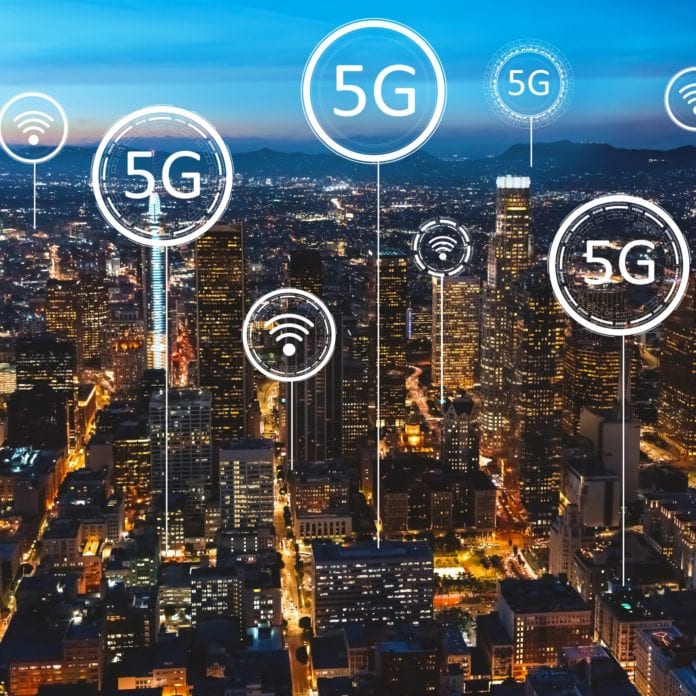Before the world was interrupted by COVID-19 and swathes of the global population went into lockdown, 5G was at the top of mobile operators’ agendas. Some businesses reported 5G delays while others maintained that their deployments were on schedule. That’s hardly surprising. The coronavirus crisis and the world’s response to it have actually increased the need for 5G technology, as organizations and governments explore new options for contact tracing and proximity tracking. This is a huge opportunity for mobile network operators, but are they ready to seize it?
Organizations around the world are trying to accelerate progression toward a so-called “new normal” by exploring ways to monitor social distancing, mask wearing and quarantining. As on-site premises slowly start to reopen, companies are in the market for a quick and accurate way to ensure visitors and customers are behaving responsibly, maintaining their distance and adhering to national guidelines.
Whether or not masks are required, or how many people are allowed into an enclosed space like a shop or warehouse will very much depend on raw data and how quickly that data is turned into actionable intelligence. Artificial intelligence (AI) and machine learning (ML) will play a role in this as things develop, but one thing’s certain: lightning-fast connectivity and pervasive coverage will be crucial.
The end of standalone closed-loop systems
Mobile network operators have been well placed to offer 5G solutions to enterprises. As the world approaches a point where tracking and tracing eventually become commonplace, network operators will be in an advantaged position to provide the vertical integration needed for organizations to move forward with confidence.
In the past, organizations could depend on closed-loop proprietary systems to detect things like gas leaks or fires. In the coming months and years, proximity tracking may become just as crucial – if not more so. However, it’s not something that organizations are going to be able to handle alone. This creates a very specific and immediate use case for 5G. How would such a system work?
First, detection of data will need to be high on the agenda, with companies being alerted when someone is behaving in an irresponsible or harmful way, such as not wearing a mask in a locale with a high number of COVID cases. Second, that data will need to be aggregated at speed, showing trends and information in real time. If large groups of people aren’t wearing masks, is there a correlating factor? This leads to the third stage, where data is presented as intelligence that a company can act on.
5G will bring low-latency connectivity across much wider distances, making it an ideal technology for this. A 5G network will be able to capture data at the edge, co-relate trends via affective computing to make sense of the data and deliver actionable intelligence at ultra-fast speed to key decision makers. From its origins in the ‘90s, affective computing is making a comeback and is being trialed by a number of businesses that can recognize and interpret human emotions and behaviors. For example, cars can identify when their drivers are tired or angry. Similarly, the same computing power could be harnessed to stop the spread of the virus. Operators will be able to take this process and apply it to general purpose situations, or they’ll be able to tailor it to specific warehouses, office buildings, shops and factories, offering further scope for multiple vertical markets.
Design considerations
Working with enterprises to design closed-loop solutions enabled by 5G is only the first step. There are some major design considerations to be made once the technology is in place that could make or break it as a means of maintaining social safety and “COVID-safe” environments.
Being able to monitor and gather data is one thing, but when should an intervention be made? This is a question governments and enterprises are already starting to ask, but how and when a business should intervene – by closing its doors, creating new rules or even ejecting people from the premises – remains hotly debated.
If too many alarms are flagged, people are unlikely to take them seriously. “Alarm fatigue” could set in. If too few are noted, the risk of community infection will rise, which could result in the temporary closure of the business. Operators, enterprises and legislators will need to work together to design a custom-fit solution that functions effectively in all scenarios, not only for the benefit of a business, but for the health and safety of staff and customers.
Operators have always been on the periphery of affective computing, keen to work with enterprise networks to leverage their capabilities and develop new joint opportunities. It’s becoming increasingly clear that now is the time.

